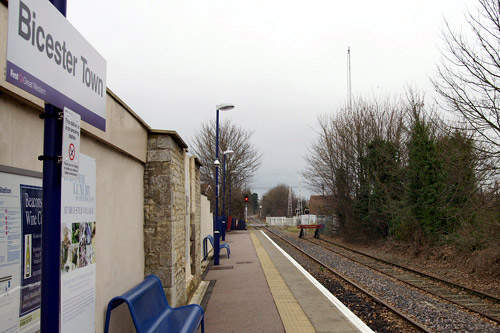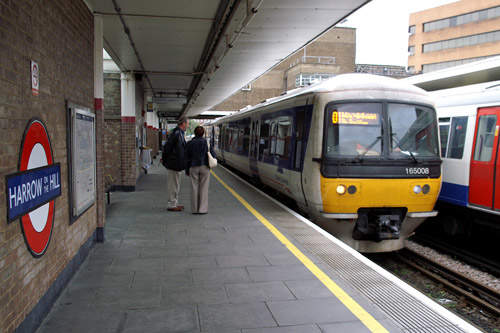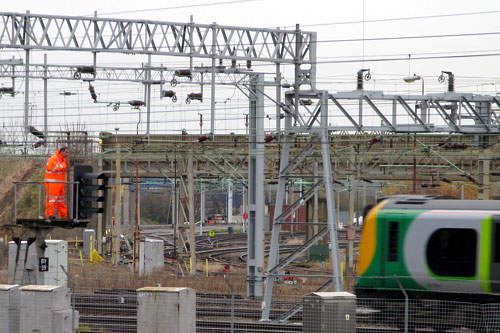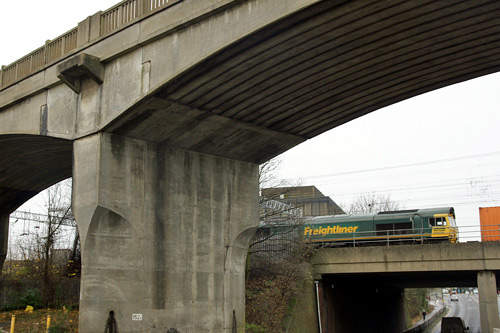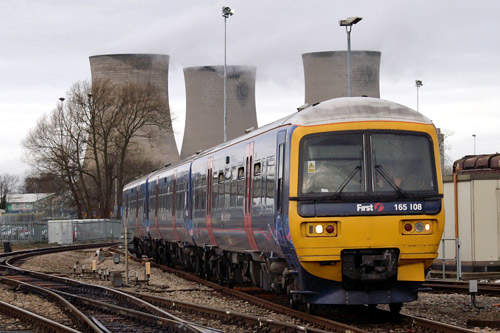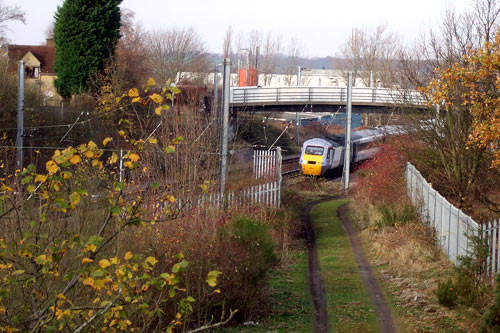There are plans to create a new London north orbital passenger railway by reopening the line between Oxford and Bletchley (for Milton Keynes) for regular use. It is emblematic of a wider issue in the UK, that of a long-term attitude and financial commitment to rail as part of the nation’s transport infrastructure.
Although demand for passenger and freight has risen dramatically over the last decade, this has largely been met within infrastructure that survived a programme of closures, most famously but not exclusively triggered by the Beeching Report (‘The Reshaping of British Railways’, 1963).
The project
There are two projects within the East-West proposals, both underpinned by profound changes in this part of south-eastern England since the rail closures.
Across the ‘Oxford-Cambridge Arc’ there has been large population increase, especially in the very large town (styled a new city) of Milton Keynes. There is a high concentration of service and distribution activity, similarly of research and technology-based industries.
Following earlier attempts to reinstate services ceased in 1967 on the ‘Varsity’ or ‘Universities Line’ between Oxford and Cambridge, a more restricted East-West scheme gained momentum in autumn 2008 for the line between Oxford and Bletchley to be restored to full operational condition.
Bletchley is the junction with the West Coast Main Line, with Milton Keynes just to the north. With capacity being expanded during 2008, Milton Keynes Central station serves commuter, local and intercity markets. The east-west line is already open east of Bletchley to Bedford, the two linked hourly by London Midland trains.
An announcement was made by passenger franchise operator Chiltern Railways (a subsidiary of Germany’s DB Regio since January 2008) of intent to run trains from Oxford to London via Bicester. They already operate a limited service recommenced in 1987, mainly geared to commuter flows and ending at Bicester Town station. Chiltern Railways has a relatively long franchise, potentially up to 2022.
In November 2008 Chiltern Railways, the Milton Keynes Partnership and the East-West Rail Consortium signed an agreement to simultaneously develop the two projects, for which £2m has been secured for detailed planning.
In January 2013, Network Rail announced plans to build the western section between Bedford and Oxford, as well as Aylesbury and Milton Keynes, under a five-year strategic business plan 2014-2019.
Network Rail and Chiltern Railways partnered in September 2013 to upgrade the line between Oxford and Bicester. The partnership also aims to build 1km of new railway line to connect the Chiltern Main Line at Bicester.
The East West Rail scheme will be delivered in two phases over a five-year period from 2014 to 2019. The first phase will provide infrastructure for Chiltern Railways lines in the Oxford-Bicester-London route. It will also deliver works required for the later introduction of East-West Rail services west of Bicester.
The second phase will deliver the works east of Bicester to Bletchley and Bedford, including the Aylesbury to Claydon Junction line.
Network Rail awarded an £87m ($145m) contract to a joint venture between Carillion and Buckingham Group Contracting in March 2014, for the design and construction of a new 0.25 mile (0.4km) Chiltern Railways line between London Marylebone and Oxford. The joint venture will also build the western section of the East-West Rail scheme extending to Bedford and Milton Keynes.
Infrastructure
Encouraged by the opening of the nearby M40 motorway, Bicester has grown rapidly in a dormitory role for Oxford, London and the Birmingham conurbation. At the separate Bicester North station, it already has rail links to the latter two, respectively between Marylebone and Snow Hill stations on a line that crosses but does not connect with the east-west route.
The line between Oxford and Bletchley (now incorporated in southern Milton Keynes) remains in place, largely single track with low speed limits but legally still an operational railway. It is used east of Bicester by freight, mainly of waste for disposal.
The project calls for complete doubling and upgrading to Bicester, reducing times on this section from the present 26 minutes to 14. Cut back to basics following reopening, Bicester Town would gain a second platform and become a staffed station.
To offset traffic congestion normally afflicting Oxford and the city centre station, a new Water Eaton park-and-ride station would be built to provide easy access via the ring roads.
With 100mph (160km/h) operation planned, in spite of the longer routing than the Great Western competitor, Chiltern’s London trains would take only six minutes longer.
Moreover, the latter may suffer in forthcoming years with disruption caused by Reading area remodelling and the Crossrail project between Paddington and Maidenhead.
More substantial reinstatement work would be needed east of Bicester, although the flyover crossing the West Coast Main Line at Bletchley remains, an otherwise difficult and expensive obstacle for the project.
Rolling stock
With electrification not involved, passenger services will be handled by DMU formations. Chiltern Railways currently has a mixture of classes 165 (built BREL York) and 168 (Adtranz/Bombardier, Derby). The Oxford-London Marylebone route would compete with First Great Western services to Paddington via Didcot which uses similar DMU vehicles.
In January 2008 Angel Trains leasing company ordered four Bombardier Class 172 units for Chiltern Railways, although these may be restricted to frequent stop services nearer London. Service expansion would require more stock procurement.
Signalling and communications
All new or uprated lines would be according to standards on the Network Rail national infrastructure. For the London approaches, stock has to be compatible with aspects of TfL Underground systems. The all-modes level of passenger traffic between Oxford and London is very high and also supports high-frequency coach services such as the ‘Oxford Tube’.
Oxford-Cambridge is also served by regular coach services, with high frequencies on the western section up to Bedford. The success of the rail services is reliant on effective competition within the overall market. Two trains per hour in each direction are envisaged for the Oxford-Bicester-London route.
The future
Earlier projects for the Universities line included services over rebuilt infrastructure east of Bedford. However, the cost of reinstatement, solving building encroachments on the original alignment and crossing the East Coast Main Line at Sandy makes this seem improbable.
The proposed opening for Oxford-London Marylebone is 2015–16, concurrent with works proceeding for Milton Keynes services. Two trains per hour is an aim for Oxford to Milton Keynes/Bedford. Mainly using a surviving Metropolitan/Great Central section, an Aylesbury to Milton Keynes service could be added to the Chiltern Trains framework.

